 |
Number 115, October 2009 |
 Fab facility
Fab facility
Work stays in-house as ORNL’s Fabrication Shop upgrades and updates
|
|
Dianne Bannen, who recently joined the Fabrication Shop team, uses a HAAS Toolroom mill. |
Conventional wisdom once held that the
Lab’s in-house fabrication services came at a high cost, which made it difficult for them to compete with outside shops. About 10 years ago a visit to the Lab’s Building 7012 was marked by an eerie quiet, save the occasional hum of a lathe or the buzz of a welding machine.
Not anymore. The Facilities & Operations Directorate’s Fabrication Shop is whirring with customer work on new, state-of-the-art equipment and upgraded older machines manned by a highly skilled work force.
Outside firms are finding themselves playing catch-up as F&O’s Fabrication Shop is winning competitive bids for in-house work. Lab researchers are happy about it, because they often prefer in-house services.
“We compete with outside shops and win,” says Bob Johnston, who leads the Lab’s Fabrication Shop. “We have become the fabricator of choice for a number of research projects. With a lot of hard work, strategic equipment purchases and determination from our highly skilled craftsmen, we have turned the corner in providing quality parts and services, delivered in a timely manner at good value to the customer. We have a more customer-focused crew and work culture.”
In a recent bid on a panel for the Spallation Neutron Source, ORNL’s fabrication services topped four other bidders on price and either bested or beat all but one on turnaround time.
Visits to the Lab’s Fabrication Shop were once marked by an eerie quiet. Not anymore. |
Working with F&Os manufacturing engineers or through direct contact with shop supervisors, customers can get an estimated cost for their job or a guaranteed fixed price. The manufacturing engineers are key to the process of ensuring customers are being provided with good value and service by competitively bidding the work both internally and externally.
“There are times when the internal shop provides a bid knowing that they are not going to be the lowest in price, but the customer balances the benefits of on-site services, convenience, hands-on oversight, and direct craftsmen input, which often times outweighs lowest initial cost,” Bob says.
“ORNL’s fab shop is winning business by providing good value.”
ORNL’s most cutting-edge research facilities are seeing the benefits. Matt Howell, who works on cryogenic systems for the SNS’s Research Accelerator Division, brings about a dozen jobs a year to the Fabrication Shop.
“One big advantage is proximity,” Matt says. “You can get a design to the 80-percent level and complete it with the guys who are doing the hands-on work.”
|
Mike Hitmann, who is also new to the Fabrication Shop, uses a digitally controlled lathe. |
Matt recalls one instance where the machinists suggested a critical design change during fabrication of a cryogenic component after factoring in the expansion and contraction of the material.
“They are familiar with the work, and they have a vested interest in its success,” Matt says.
John Bumgardner, the plant manager at the High Flux Isotope Reactor, says that the ORNL Fabrication Shop support has been of great assistance in meeting safety and production goals.
“Fast response in tight situations is a strength,” John says. “On many occasions we have needed a fabrication quickly for critical modifications or plant operation, and the Fabrication Shop has provided excellent support.”
John notes that fast response capability is only one aspect of the Fabrication Shop that directly supports HFIR. “The day-to- day, ongoing support on many jobs is of equal value. The Fabrication Shop assists in the whole fabrication process from initial thoughts through final delivery, which is extremely valuable and has improved our job throughput.”
The big shop facility in Building 7012 features an assortment of machines found in large-scale machine shops and fabrication facilities, including lathes, presses, cutters, press breaks, the latest welding capabilities and a complement of skilled craftsmen that make things work. Some of the equipment is old; that is, from back when machines were built to last.
Some of the equipment is from back when machines were built to last. Other equipment is state of the art. |
Other equipment, such as the shop’s water-jet cutter, is state of the art. That particular machine was one of the first in the region. Other shops have acquired similar machines to keep pace.
The Fabrication Shops has seen substantial equipment upgrades, including replacing unforgiving, mechanically operated tools with more forgiving hydraulically actuated equipment. The retrofits have made older machines safer and more accurate.
F&O learned years ago that it had no lock on in-house fabrication services. If their work wasn’t cost-competitive, fund-strapped researchers would go outside if forced. That was a less than ideal situation, because outsourcing often meant sacrificing the ability to work closely with the crafts people, which is important in a research environment.
On this particular day, Gary Henkel, a quality assurance engineer at the High Flux Isotope Reactor, is conferring with the machine shop’s supervisor, Don Johnson. They are working on a critical part of HFIR’s cooling system, correcting a large stainless steel cylinder’s dimensions with the shop’s large G&L horizontal boring machine.
The G&L machine, as Don describes, has a wide range of capabilities for large machine part requirements, but like much of the shop’s older equipment, there are plans to upgrade and retrofit it with digital control systems that are more precise, more efficient and safer to operate. These investments optimize the vintage machinery, which in many cases would cost well over a million dollars to replace.
Huge gains in efficiency and quality have been realized in other areas of the Fabrication Shop through an investment in newer technology, such as CNC (computerized, numerically controlled) equipment. On these machines, operators can enter the computerized specifications for the particular part, creating a permanent but flexible part file, and providing more predictive output of finished parts.
“CNC machines eliminate a lot of setup time that you see in a manually operated machine,” says the machine shop’s E.W. Seals. “Customers can e-mail us the drawings; we can program directly off those drawings and make the part. With that program on our system, if they need another part, they can simply order it.”
E.W. says the CNC technology minimizes human error and time involved in a project, particularly when large numbers of a particular part are needed.
“Our guys have been really receptive to it. Once we get a drawing from a customer, we can spit out a program and start machining,” he says.
Much of the older equipment has been replaced with CNC programmable equipment, and in the last three years F&O has brought on eight new machinists with CNC experience.
“Newer technology in alignment with the existing pool of highly talented craftsmen has produced the right complement for success,” E.W. says.
Because of the new, computerized technology, not to mention a new business model, the crafts people work directly with researchers.
To the researcher, it’s the difference between talking to the auto repair shop’s service manager or talking to the mechanic who actually fixes your car.
E.W. sums it up: F&O’s efforts to keep pace with advances in machining and fabrication are paying off for the Lab as a whole.
“Technology when combined with a skilled work force is a wonderful thing,” —B.C. ![]()
Video: See ORNL's Fabrication Shop up close and personal
in
this clip.
 Dream delivered: SNS pushes past one megawatt
Dream delivered: SNS pushes past one megawatt
|
Michael Plum (sitting) and Viatcheslav Danilov (standing) react as the SNS beam power readout goes to seven figures. |
Stuart Henderson said he was ready to get some sleep. Whether he meant for the first time since April 28, 2006, he didn’t say. But the director of the Research Accelerator Division was obviously relieved.
The Spallation Neutron Source, which is supported by Stuart’s division, on September 18 became the first spallation neutron source to break the one-megawatt barrier. SNS is now the most powerful spallation neutron source in the world, topping the continuous-beam SINQ at the Sherrer Institute in Switzerland, which currently runs at 900 kilowatts.
Much as the day the SNS was first turned on in April 2006, the milestone came with a control-room whoop as the power reading on the instrument panel rolled over to seven figures.
The SNS was ramping up for its latest operational run following a maintenance shutdown that included the installation of a brand new target module to replace the original target, which outlasted most expectations of service life.
“It’s been a long time in the making and the dream of a lot of people to make a megawatt-class pulsed spallation neutron source, and today we’ve finally delivered on that dream,” said Stuart just after the deed was done.
Until the SNS, the world’s pulsed neutron sources operated in the hundred-kilowatt range. The SNS actually became the world record pulsed spallation neutron source when it reached 160 kilowatts in 2007, earning it an entry in the Guinness Book of World Records as the world’s most powerful pulsed neutron source.
Beam power isn’t merely a numbers game. A more powerful beam means more neutrons are spalled from SNS’s mercury target (see sidebar). For the researcher, the difference in beam intensity is comparable to the ability to see with a set of car headlights versus a flashlight. Researchers have always been vexed by the comparative dimness of neutron beams versus other methods, such as X-ray diffraction. SNS is closing that gap.
“It means being able to take neutron scattering measurements about a factor of 10 faster than before and being able to look at very tiny samples with neutrons, and doing a whole set of experiments that were simply unimaginable as recently as five years ago,” Stuart says.
|
Stuart Henderson cradles a commemorative one-megawatt bulb. |
“While the SNS team members and users come from literally all over the globe, Stuart’s origins are somewhat more homegrown. A native of Louisville, Ky., he did his undergraduate work at Vanderbilt University, spending two summers at ORNL in the mid-1980s as a student, and received his doctorate from Yale University in particle physics.”
He returned to ORNL from Cornell University in 2001 during the early phases of SNS’s construction. Stuart took over the accelerator division after Norbert Holtkamp left to lead construction of the ITER fusion project.
In the meantime, scientists have been performing cutting-edge experiments and materials analysis as its eventual suite of 25 instruments come on line to receive the SNS’s neutron beams.
The Neutron Sciences Directorate exceeded its FY 2009 user goals for the SNS and its companion facility, the High Flux Isotope Reactor, well ahead of the end of the fiscal year. The SNS’s continued success will give researchers more reasons to keep coming to Oak Ridge.
“The attainment of one megawatt in beam power symbolizes the advancements in analytical resources that are now available to the neutron scattering community through the SNS,” says ORNL Director Thom Mason, who led the SNS project during its construction and startup. “This is a great achievement not only for DOE and Oak Ridge National Laboratory, but also for the entire community of science.”—B.C. ![]()
Watch the dramatic moment when the SNS reached one megawatt.
 Joe Herndon’s R&D years give him ESH&Q insights
Joe Herndon’s R&D years give him ESH&Q insights
|
A long way from Chernobyl, ESH&Q Director Joe Herndon last year announced ORNL’s world-class safety performance award from Battelle. |
Joe Herndon spent more than three decades as a researcher and research line manager before becoming ORNL’s top environment, safety, health and quality official. He believes that R&D background gives him a unique perspective on the job.
For one thing, owing to his days in science and engineering, Joe has witnessed about as bad as the ESH&Q challenge can get.
As a result of the 1986 Chernobyl nuclear reactor accident, Joe, who directed the Laboratory’s robotics division at the time, made several trips in the late 1990s with a team of researchers to Ukraine to deliver and commission a remotely operated vehicle for inspecting the highly contaminated interiors of the reactor facility.
The accident, which contaminated an entire region and upended an already struggling nuclear industry, was eventually attributed to a number of lapses in safety and quality culture.
“I wanted to do this ORNL job because I have experience to offer from the perspective of my three decades of research,” says Joe, who became ORNL’s director of ESH&Q in January 2008.
The ESH&Q realm includes responsibility for the implementation of safety, environmental stewardship, radiation protection, employee health and quality assurance. Joe joined the ORNL Leadership Team on a high note: The Lab had just reached three million hours without an injury when he became ESH&Q director. Late last year Battelle recognized ORNL for “world-class safety performance.”
Joe’s task is to maintain the safety culture.
“That can be a difficult challenge because safety requires the attention of everyone in the Laboratory,” he says. “It’s terribly important that we all individually watch out for ourselves and those we work with every day. The only acceptable goal for injuries is zero.”
ORNL and DOE adopted Integrated Safety Management more than a decade ago as a way to institute safety into the work procedures. Its five tenets are now standard procedure for doing a job: Define the work, analyze the hazards, develop work controls, perform the work and provide feedback.
“The Lab’s missions have changed significantly in the last 10 years, but the ISM approach is still the way we do safety; it hasn’t changed,” he says.
Joe is also ultimately responsible for ORNL’s performance to environmental regulations in the course of Lab operations. ORNL’s environmental policy is geared to instill, similar to ISM, a culture of environmental stewardship embedded in the Laboratory’s day-to-day operations.
“We’ve had a very good record in protecting the environment in recent years, but we have to stay attentive every day to any effects what we do will have on the environment,” he says.
For example, last year discharges into a storm drain resulted in two fish kills. Careless or unknowing actions can cause complications literally far downstream.
The recent onset of construction and demolition around the ORNL campus could pose potential environmental and safety hazards as projects evolve and the work environment changes almost daily. Subcontracted workers will be working alongside ORNL staff. Attention to safety and environmental goals must remain the same.
“I am most concerned that each of us maintain situation awareness in everything we do, even walking down the street, especially while the construction activities are so heavy,” he says.
Joe says a working group has been set up on performing Recovery Act-related cleanup and staying consistent with environmental and safety regulations in how the work is performed.
A native of Camden, Tenn., Joe received his degrees in mechanical engineering from the University of Tennessee. He came to ORNL in 1977 to work on remote systems for the Liquid Metal Fast Breeder Reactor program, and later spent three years working for NASA’s flight telerobotic servicer R&D program. Joe was the second director of the ORNL Robotics and Intelligent Systems program and later became director of the former Robotics & Process Systems Division. His most recent R&D line management job was the formation of the Nuclear Science & Technology Division, where he served as its first director.
Now, as director of ESH&Q, Joe is devoted to a symbiotic challenge: Make sure research can be efficiently performed within our ESH&Q requirements. One important avenue toward this goal is for the lines of communication to be open between research and ESH&Q.
“My philosophical vision for the ESH&Q Directorate is that we enable the Lab’s research to be performed compliantly and also efficiently,” Joe says. “I emphasize communication and cooperation with our research staff, and to always look for better ways to accomplish what we have to do.”—B.C. ![]()
 Nichols to lead computing directorate
Nichols to lead computing directorate
|
Nichols |
Jeff Nichols has been appointed associate Laboratory director for the Computing and Computational Sciences Directorate, effective October 1. Jeff has been serving as interim ALD since April.
Jeff joined the Lab in 2002 as director of the Computer Science & Mathematics Division and was named deputy ALD for the directorate in 2007. Previously, he was deputy director of the Environmental Molecular Science Laboratory at Pacific Northwest National Laboratory.
Jeff received his doctorate in theoretical physical chemistry at Texas A&M University. He was also a staff scientist with IBM at the Utah Supercomputing Institute.
Jeff succeeds Thomas Zacharia, who is now ORNL’s deputy director for Science & Technology. ![]()
 |
 Microorganisms in sensory world
Microorganisms in sensory world
A California Institute of Technology and ORNL collaboration has resolved a question of how microorganisms detect environmental signals and has shown that the array of receptors in cells is alike across species—critical information, particularly in understanding how certain diseases work.
The Computer Science and Mathematics Division’s Igor Jouline (Zhulin) and Grant Jensen at Caltech combined the emerging technologies of computational genomics (ORNL) and electronic tomography (Caltech) to explore whether different microorganisms detect environmental signals in the same way.
Igor says the question is important “because microbial signal transduction systems serve as simple models to learn how proteins communicate with each other in relaying sensory information. Fundamentals of this process are important for human diseases triggered by lack of protein-protein communication, such as cancer.”
Structural studies using X-ray crystallography produced conflicting results on the organization of sensory apparati in different bacteria. The Caltech lab used a new technique, electron cryotomography, to visualize sensory receptors in living cells.
“They used our previous publication in PNAS (Alexander & Zhulin 2007) to identify microbes with different types of receptors and then took beautiful pictures of honeycomb receptor arrays. These pictures established the universal mechanism of signaling. They strongly supported one crystallographic model and refuted another,” says Igor.
However, bacterial cells have more than one type of receptors, and there was a serious question as to which receptors were being seen on tomograms.
“Here came our group,” says Igor. “We provided critical computations that linked receptors seen on the tomograms to genes that encoded these receptors in the genome. We were able to establish that indeed receptors of different classes all had the same array architecture, which is critically important for signaling.”
So the signaling receptor mechanisms are alike across classes of species, a trait established early in the evolutionary process.
The work was published in the on-line Proceedings of the National Academy of Sciences.
 ‘Extreme’ week for Jeff Christian
‘Extreme’ week for Jeff Christian
|
Jeff Christian (right) briefs Secretary of Energy Steven Chu for his Extreme Makeover, Home Edition appearance. |
When Jeff Christian got a call from his DOE program manager, asking if he would like to participate in a Washington, D.C. construction project, he figured he was “it.”
The project turned out to be two buildings for the ABC primetime TV show Extreme Makeover, Home Edition. The network show, which identifies deserving and needy families or groups and performs whirlwind renovations of their dwellings, was planning to build a 2,700-square-foot home and a 6,700-square-foot school. The show’s staff contacted DOE about including the latest in energy-efficient technologies in the buildings.
“I met with the show producers, talked to them for two full days about near-zero energy and left not sure of my impact. The next day got a call, saying ‘we like your idea.’ They inquired about the technologies I suggested to approach zero energy—advanced wall and roof panels, solar modules, hybrid water heaters, triple-layer windows, geothermal heat pumps, a weather station—and if I could get everything donated in a week’s time,” Jeff says.
“We got everything they wanted. It was miraculous.”
ORNL’s leading Near-Zero-Energy proponent became a principal technical advisor and make-it-happen magician for the crash projects. When Secretary of Energy Steven Chu visited the school’s set (with two other cabinet-level officials), Jeff prepped him for an appearance on the show.
“My message to the secretary was that we could work with a show that does these extreme things and construct two buildings that reflect our long-term mission on zero energy buildings, and do it in a really short time and in a hard regulatory environment.
“We got it done, and it makes a very strong statement,” Jeff says.
The episode is scheduled to air this winter.
 Haseltine on “Next Big Thing”
Haseltine on “Next Big Thing”
Eric Haseltine, at ORNL for a September 11 seminar, recalled during his days at Disney Imagineering that he threw a staffer out of his office for suggesting the cockamamie idea of equipping Disney World patrons with GPS units to navigate around the attractions.
That was in the mid-’90s. Now the GPS-based accoutrements are common around the Disney theme parks. Their most popular tasks: Show where Mickey is at the moment, or let Mickey tell you about the ride you’re waiting in line for.
The convergence of technology with ideas is often how the “next big thing” occurs, says Haseltine, who left Disney after the September 11 attacks to direct research at the National Security Administration.
For example, in the mid-1990s, about the time Haseltine was tossing the prescient staffer out of his office, Apple computers produced a what-if video of a cellphone equipped with laptop computing power—in other words, an iPhone.
Resisting the urge to dismiss far-out theories out of hand can open up cloudy horizons. Examples of once far-out ideas now accepted as fact abound: Earth as not the center of the universe, invisible “germs” that cause diseases and continents that drift, to name a few.
“A few wackos may be right,” says Haseltine, who for some years contributed Discover Magazine’s Brain Teaser feature. “The problem may be yourself.”
So imagine what a petaflops-powered computer might do if packed into a consumer product.
Haseltine suggests, “Ask yourself, where are things going in my business, and where is the next quantum leap?”
Reported by Bill Cabage |
 Accomplishments bring Significant Event Awards
Accomplishments bring Significant Event Awards
Significant Event Awards recognize staff members for recent accomplishments in research and operations. Congratulations to all for their outstanding achievements.
Biological & Environmental Sciences
DOE Office of Biological and Environmental Research Science Focus Area Peer Review and Scientific Advisory Committee Review. Beth Bailey.
North American Carbon Program Interim Synthesis Workshop. Robert Cook, Peter Thornton, Wilfred Post, Lisa Olsen and Lee Ann Hughes.
On an unrealistically short deadline, successfully managed the editing, layout and publication process for “Carbon Cycling and Biosequestration: Integrating Biology and Climate Through Systems Science.” Judy Wyrick.
Successful and simulations completion of critical DOE BER publications. Jennifer Bownas.
Business & Information Systems
American Recovery and Reinvestment Act Financial Management Team. Debbie Mann, Lori Hickey and Gerald Scott.
FutureNet Independent review of all activities associated with ORNL WAN project. Mark Keck and Quinn Windham.
State of Tennessee use tax audit support. Lenora E. McBee, Mark S. Gallaher and Virginia L. Lynch.
Computing & Computational Sciences
Successful Cyber Security team response to DOE’s Red Team exercise to test the effectiveness of the ORNL Cyber Security program. James Simmons, Carlos Cunningham, Doug Smelcer, Phil Arwood, Eddie Bishop, Mark Floyd, Tim Guilliams and Mark Fletcher.
Development and delivery of a high-risk proof-of-concept Cyber Security System in four months to Lockheed Martin. Justin Beaver, Xiaohui Cui, C. Symons, Robert Patton, Yu (Cathy) Jiao and Jimmie Treadwell.
First of a kind demonstration of coherent beam combining from an array of high-power lasers large array. Bo Liu, Yun Liu and Yehuda Braiman.
Communications & External Relations
Performance of duties over and above existing tasks by filling in for protocol officer during her maternity leave. Jennifer Palmer.
Energy & Engineering Sciences
“Special K.” Charles Alexander, Charles Britton, Mark A. Buckner, M. Nance Ericson, Michael R. Moore, John A. Scircle,
J. Michael Vann and Bruce Warmack.
Recognition by DOE for her leadership role on the report “Combined Heat and Power: Effective Energy Solutions for a Sustainable Future.” Patricia Garland.
Testing and evaluation of the world’s first inherent fault current limiting superconducting cable. Chris Rey, R. Duckworth, Jonathan Demko, Isidor Sauers, Randy James, Enis Tuncer, Alvin Ellis, Brenda Demps and Dennis Sparks.
Zero Energy Building Research Alliance (ZEBRAlliance) will integrate ORNL’s energy-efficient technologies into the construction of three homes to be used as test markets. William A. Miller, Ed Vineyard, John A. Shonder, Van D. Baxter, Anthony C. Gehl, Kimberly R.
Grubb, Phillip Boudreaux and Jeffrey Christian.
Demonstration of high-performance computing for nuclear applications on the Cray Jaguar XT5. Tom Evans.
Development and deployment of the Proliferation Trade Control Directory. Terry Donaldson, Ron Cain, Tammy Claiborne, Tommy Adkins, Vicki Wheeler and Michael Bjerke.
Significant contribution to grounding and cabling problems at the Piketon Facility for the USEC CRADA. J.A. (Tony) Moore.
Exceptional administrative support during group leader transition. Mary Jernigan.
Purification of the HFIR-produced radioisotope berkelium-249 for use in the superheavy element research. Curtis E. Porter, Franklin D. Riley.
Environmental, Safety, Health & Quality
Occurrence Notification Process Improvement project. Phil Baxter, Wayne Stormer, Monty Ross, Eddie Shirley, Dale Perkins, Kenny Edwards and Debbie Sumner.
Ion chamber repair. Gary H. Henkel.
On-site mixed waste treatment and disposal. Chuck Eblen and Jeff Davis.
Facilities & Operations
Project management performance for Data Center improvements. B. Hammontree.
Closure of 4500-N Flagpole Parking Lot. George Baber.
Continuing excellence project management support for Utilities Division initiatives. Donald Garrett.
Exceptional computer-aided design support for strategic planning efforts and fast response projects. David E. Smith.
Outstanding performance of ORNL’s Intrusion Detection System and receipt of a positive observation during the annual DOE-ORO security survey of ORNL. Daron J. Keesee.
ITER
For outstanding support to the U.S. ITER Project Office by preparing the U.S. ITER highly unique export control license, approved by the DOE and the Department of Commerce. Rolf Migun.
Provided outstanding support to the U.S. ITER Project Office and the Office of Chief Engineer by their tireless research efforts regarding appropriate and cost-effective vendors for CAD models and eventually saving ORNL and U.S. ITER $1.3M. David Williamson and Kelli Kizer.
Laboratory Director Office
Planning and Facilitation of Battelle Business Process Modeling Initiative workshops. Frances Drake.
Neutron Sciences
Earned Value Management System certification. Todd C. Holzer, George M. Herron, Christina Hoffman, Joerg C. Neufeind, Leighton Coates, Feng Ye, C. Wildgruber, Lewis A. Galyon and Doug Bunch.
Implementation of human performance improvement helps change safety paradigm. Charles Ramsey.
Bringing Accelerator Physics and the SNS to the classroom. Sarah Cousineau, Jeff Holmes, Yan Zhang, Tom Pelaia and Yoon Kang.
National Security
National Geospatial Intelligence Agency National System for Geospatial R&D Forum 2.0 Conference at ORNL. Bobbie R. Sweet, Thomas R. Gibson, Natalie L. Crippen, Angela D. Raby, Diana L. Dowdell, Jean Hudson, Lisa S. Roberts, K. Styles Herron, Kimberly K. Miner and Joy D. Nix.
Nuclear Operations
Stabilization of californium-252 isotope program. Julie Ezold, Porter Bailey, Dennis Benker, C. Scott White, Jeff Delashmitt, Mitch Ferren, Rocky Cline, Ed Smith and Tony Dyer.
Installation of an improved hydraulic rabbit facility to meet a challenging milestone for HFIR. Keith Napier, Brian Weston, George Barclay, Ray McKeown, Randy Hobbs, Rodney Williams, Dan Pinkston, Gary Henkel, Troy Jensen and Carolyn Hendricks.
Replacement of the old HFIR transformer to improve reliability and safety. Carl J. Schepens, Hugh T. Christie II, Brandon L. Coday, Mark E. Mathews, J.V. (Buddy) Johnson Jr. and Kathy Lett.
Physical Sciences
FIRST Center Proposal Team. Dave Wesolowski, Dave Cole and Steve Overbury
Facilitation of ORNL Energy Frontier Research Center proposals. Lynn Smalley, Linda Allen, Teresa Roe, Ann Strange and Carolyn Thompson.
Formulation of a unique, modern approach to the study of atomic defects that served as underpining of an EFRC Research Center of Defect Physics in Structural Materials. G.M. Stocks, Roger Stoller, Easo George, Ben C. Larson, Don Nicholson and Gene Ice.
Crafting and implementing new plan for international cooperation on thermoelectrics R&D that sets stage for increased ORNL efforts in this important area of energy research. Hsin Wang.
Planning promoting, and winning a set of major nuclear R&D contracts for ORNL. Tim Burchell.
For a major contribution to the Center for Nanophase Materials Sciences clean room research effort by adding the very latest capabilities for atomic layer deposition to the Nanofabrication Reasearch Laboratory toolbox and to the toolbox of the laboratories across the world. Dayrl Briggs. ![]()
 Retiree news
Retiree news
Reduction in Medicare major medical supplement premium for retirees
Recently, retirees received a letter informing them that the premium for their Medicare Major Medical Supplement Insurance would decrease effective Sept. 1, 2009.
As mentioned in the notice, there are several reasons for this decrease. More retirees are using Medco’s mail order program for their prescriptions, and this results in lower costs for the program. Second, retirees are using more generic prescription drugs instead of brand name drugs. Because prescription drugs make up the majority of the cost of this program, both of these actions are important.
The third reason probably needs some explanation. The Medicare Prescription Drug Improvement and Modernization Act of 2003 established a subsidy for companies that continued to provide a drug benefit to their retirees. In continuing to provide such a benefit, the retirees did not have to join a drug plan under Medicare Part D. UT-Battelle applied for and has received the subsidy, and is sharing it with the retirees.
In 2008 the cost of the supplemental insurance to a retiree and spouse was $374 per month; the current premium is $300 per month. This reduction amounts to an annual savings to retirees of $888.
Retirees should note that each year’s premium is determined by costs incurred during the previous year. Everyone is encouraged to continue to use mail order and generics when possible in order to keep these costs under control.
This information is presented by CORRE (Coalition of Oak Ridge Retired Employees). CORRE invites all retirees from DOE Oak Ridge sites to join us in our continuing efforts to work for fair and equitable pension benefits for former employees of K-25, Y-12, ORNL, and grandfathered employees of Bechtel Jacobs. Anyone may become an active CORRE member by sending a one-time $20 contribution to: CORRE, P.O. Box 4266, Oak Ridge, TN, 37831-4266. ![]()
 New Staff Members
New Staff Members
September 2009
Charlotte Noemie Amelia Barbier, Raphael Christopher Pooser, James Lawrence Horey, Hilda B. Klasky, Brent Jason Lagesse, Laura Lanette Pullum and Todd Mitchell Thomas, Computational Sciences & Engineering
Christopher Dennis Bryan, Gregory Edward Warren, Matthew Aaron Grooms, Shane Allen Scoggins and Carolyn Grace Corley, NScD Research Reactors
Robert Jacob Carter, Measurement Science & Systems Engr
Dwayne Alexander Elias, Biosciences
Debbie Spencer Elmore, Health Services
Nedra Jan Hashmi, Cerissa Jane Gifford, Barbara Renee Marney and Alyshia Nicole Fields, Human Resources Dir.
Shawn David Smith, Nonreactor Nuclear Facilities
Steven Marvin Stansfield, Information Technology Services (re-hire)
Wyatt Evan Tenhaeff, Materials Science & Technology
Ezekial Andrew Unterberg, Fusion Energy
Kristen Arnette Ward, B&ESD Operations (re-hire)
Timothy Michael Bolden, Operations & Business Management
James Michael Buchanan, Youngjae Kim and Dustin Blake Leverman, Center for Computational Sciences
Riasp Phiroze Medora, Nuclear & Radiological Protection
Heather Michelle Williams and Michele Lynn Wolfgram, Laboratory Protection
Jonathan Breton Swanks, Neutron Sciences Dir.
Timothy James Britton and Janet Baker Pitts, Facilities Management
Tesa Marie Carroll, Sara Crawford Mason and Jana Simpson, Business Services Dir.
Pil Jae Im, Energy & Transportation Science
Vincent Sinclair Neary, Environmental Sciences
Joanna Marie Sellen, Global Nuclear Security Technology ![]()
 Lab’s United Way campaign again tops $1 million
Lab’s United Way campaign again tops $1 million
University of Tennessee coach Lane Kiffin visited ORNL in June to begin the Lab’s 2009 United Way campaign, chaired by Edgar Lara-Curzio. It was the usual frenzied scene for a Lab United Way kickoff.
Both the coach and chairman were faced with daunting tasks: For the coach, get the UT program back on the winning track; for Edgar, meet an ambitious goal of $925,000.
Coach Kiffin’s goal is still a work in progress. Edgar, however, lit up the scoreboard.
|
United Way campaign chair Edgar Lara-Curzio (right) and co-chair Kathy Carney display the “big check” at September 22’s Leadership Givers’ breakfast. |
This year’s campaign for the second year topped the $1 million mark, with $1,025,000 to report at the close-out Leadership Givers’ breakfast on September 22.
Edgar says the Lab’s continued outstanding support of United Way couldn’t come at a better time.
“Charitable contributions in the United States decreased more in 2008 than any time in the past 50 years. United Way agencies are experiencing a double whammy, because as contributions shrink, the needs for their services increase,” he says.
Helping to fill the gap this year were ORNL retirees, who were invited for the first time to contribute to the Lab’s campaign. They responded in force, contributing $15,000 to the campaign.
Special United Way activities also helped, such as the International Festival, which raised approximately $5,000; the book fair, raising $3,800; and the football and corn toss competitions, which drew in another $3,000. The Information Technology Services Division and U.S. ITER office raised a combined $3,000 with their creative campaign activities.
This year’s directorate challenge winners were the National Security Directorate for directorates under 50 people, and the Global Initiatives Directorate for directorates of more than 50. Both were repeat winners.
The Knoxville Utilities Board’s Mintha Roach, the Leadership Givers’ breakfast speaker and member of the greater Knoxville United Way board, noted that ORNL is the Knoxville campaign’s largest corporate contributor.
“ORNL was a critical element in the success of last year’s campaign,” said Roach, who chaired the Knoxville campaign in 2008. “You were the ones who enabled us to achieve as much as we achieved.”
Next year’s ORNL campaign will be chaired by this year’s co-chair, Environmental Management & Waste Services Division Director
Kathy Carney, who will have Energy & Transportation Science Division Director Johney Green as co-chair. Edgar praised Kathy and the campaign volunteers who helped him bring off another successful campaign, probably when it has never mattered more.
“Coach Kiffin and I have one thing in common,” Edgar says. “He has assembled one of the best coaching staffs in college football, and I’ve had one of the best teams to ever run a United Way campaign.”—B.C. ![]()
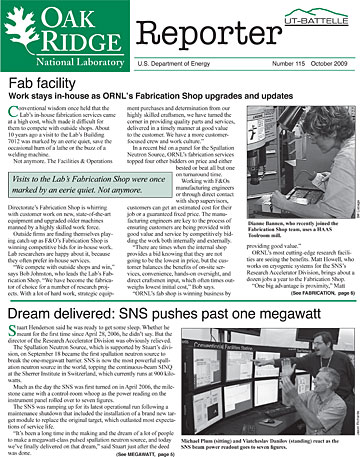
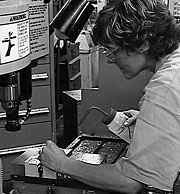

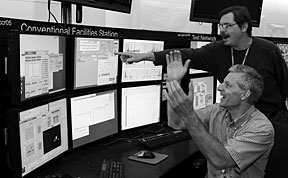

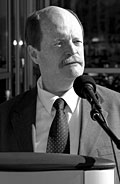

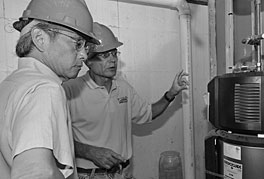
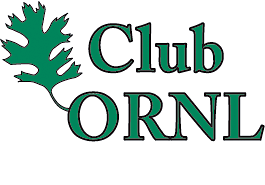 Get the details and latest news on Club ORNL Events online via the ORNL home page and on ORNL Today. This information can also be viewed outside of ORNL via the external Club ORNL SharePoint Site: https://info.ornl.gov/sites/clubornl. From this site, you can view upcoming Club ORNL Events, and ORNL retirees can request an XCAMS account. Having an XCAMS account will allow ORNL retirees to participate in these events. Lara James is the retiree point of contact, 576-3753 or jamesla@ornl.
Get the details and latest news on Club ORNL Events online via the ORNL home page and on ORNL Today. This information can also be viewed outside of ORNL via the external Club ORNL SharePoint Site: https://info.ornl.gov/sites/clubornl. From this site, you can view upcoming Club ORNL Events, and ORNL retirees can request an XCAMS account. Having an XCAMS account will allow ORNL retirees to participate in these events. Lara James is the retiree point of contact, 576-3753 or jamesla@ornl.